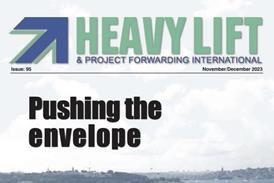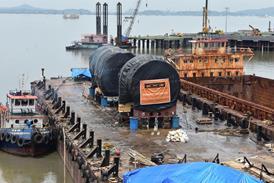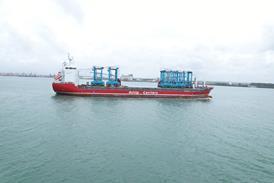October 19 - The Great Lakes maritime industry has released the results of a year-long study of the economic impacts of the entire Great Lakes-St.
Lawrence Seaway navigation system which found that that maritime commerce supported 227,000 jobs; contributed USD14.1 billion in annual personal income, USD33.5 billion in business revenue, and USD6.4 billion in local purchases; and added USD4.6 billion to federal, state/provincial, and local tax revenues.
 The study, commissioned by members of the marine shipping industry, in partnership with US and Canadian government agencies, was conducted by Martin Associates of Lancaster, USA, a global leader in transportation economic analysis and strategic planning, also found that North American farmers, steel producers, construction firms, food manufacturers, and power generators depend on the 164 million tonnes of essential raw materials and finished products that are moved annually on the system. Additionally, marine shipping saves companies approximately USD3.6 billion per year in transportation costs compared to the next least-costly land-based alternative.
The study, commissioned by members of the marine shipping industry, in partnership with US and Canadian government agencies, was conducted by Martin Associates of Lancaster, USA, a global leader in transportation economic analysis and strategic planning, also found that North American farmers, steel producers, construction firms, food manufacturers, and power generators depend on the 164 million tonnes of essential raw materials and finished products that are moved annually on the system. Additionally, marine shipping saves companies approximately USD3.6 billion per year in transportation costs compared to the next least-costly land-based alternative.
"For the first time we have a definitive, detailed, peer-reviewed study documenting the enormous contribution which the maritime industry provides to the Great Lakes-St. Lawrence Seaway region," said Collister Johnson, Jr., administrator of the US Saint Lawrence Seaway Development Corporation.
At the Port of Indiana-Burns Harbor, year-to-date shipments are up 30 percent through the first three quarters of 2011, and are on pace for the largest annual volume in five years.
"Great Lakes shipping is vital to our nation's economy as well as our future sustainability," said Rich Cooper, CEO for the Ports of Indiana. "Waterborne shipping is it the cheapest, safest, most environmentally friendly mode of transporting freight. Our state's ports handle millions of tons of steel, grain, ethanol, wind energy equipment, coal, and construction materials, which is why Indiana ranks 14th among all states in total waterborne shipping."
U.S. Transportation Secretary, Ray LaHood, expressed his support for the study results. "This report bears out what we've long known - that the Great Lakes-St. Lawrence Seaway is crucial to the U.S. economy. Not only is marine transportation the single most fuel-efficient and cost-effective way to haul goods from one place to another, but it also supports hundreds of thousands of essential jobs and generates billions of dollars in economic activity."
The report provides the navigation community, transportation planners, government policy makers and the general public with a realistic assessment of the contributions made by the Great Lakes-Seaway system to the federal, state/provincial, and local economies. The region depends on ocean vessels, U.S. and Canadian lake carriers, and barges to deliver iron ore, coal, stone, salt, sugar, grain, steel, wind turbine components, and heavy machinery to keep binational businesses running.















